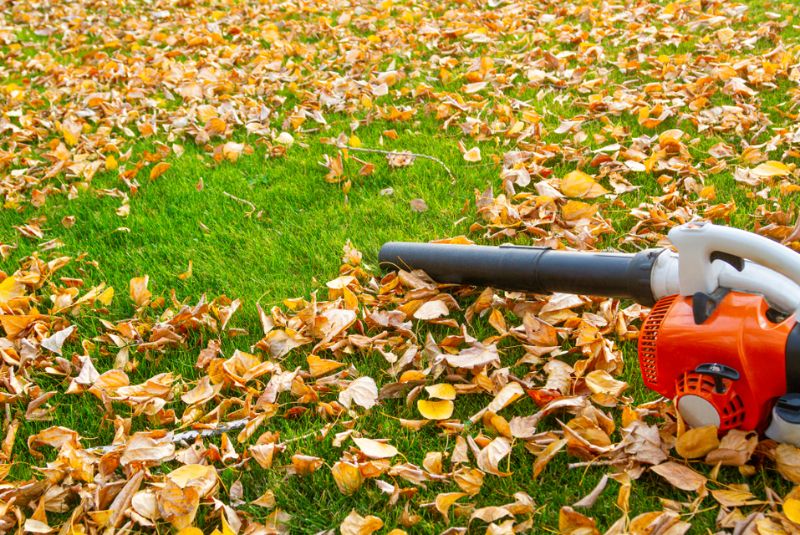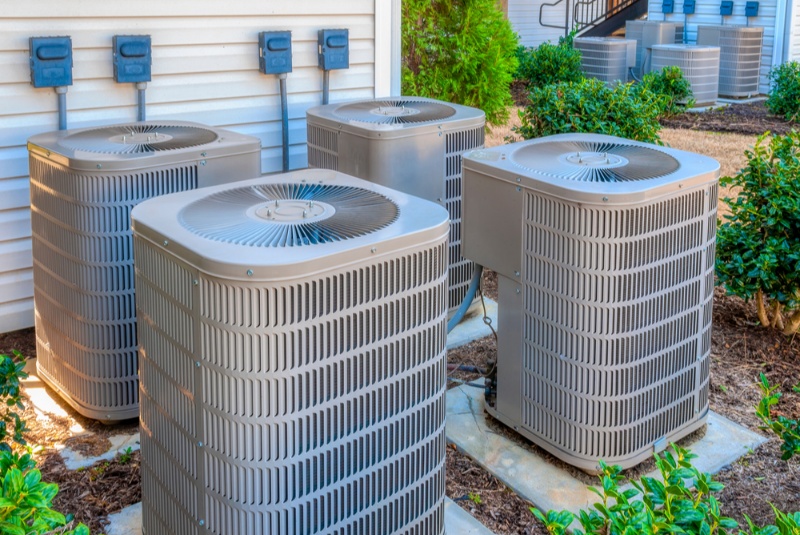Understanding the Importance of a Leaf Blower for Fall Cleanup
As the leaves begin to fall and cover your yard, choosing the right leaf blower becomes essential for efficient and easy fall cleanup. Leaf blowers save you hours of manual raking by quickly clearing away leaves, debris, and even light snow from driveways, sidewalks, and lawns. The right blower can make your fall yard maintenance more manageable, allowing you to enjoy a tidy outdoor space throughout the season. Whether you need a powerful blower for large areas or a lightweight model for small yards, selecting the right leaf blower will ensure a hassle-free fall cleanup experience.
Types of Leaf Blowers: Handheld, Backpack, and Wheeled
When selecting a leaf blower, it’s important to choose the right type based on the size of your yard and the level of debris. Handheld leaf blowers are lightweight and easy to maneuver, making them ideal for small to medium-sized yards. Backpack blowers offer more power and comfort, distributing the weight across your shoulders and back, making them suitable for larger properties or more demanding tasks. Wheeled blowers are the most powerful, designed for heavy-duty jobs or professional use in large areas. Understanding the differences between these types ensures you pick the best model for your specific needs.
Gas-Powered vs. Electric Leaf Blowers: Which Is Right for You?
One of the main decisions you'll face when choosing a leaf blower is whether to opt for a gas-powered or electric model. Gas-powered leaf blowers offer more power and longer run times, making them ideal for large yards or heavy-duty jobs. However, they require more maintenance, are noisier, and emit exhaust fumes. Electric leaf blowers, available in both corded and cordless versions, are quieter, lighter, and more eco-friendly, but they may have limited run times or require access to power outlets. Choosing between gas and electric depends on your yard size, noise tolerance, and desire for convenience and sustainability.
Corded vs. Cordless Electric Leaf Blowers
If you’ve decided on an electric leaf blower, you'll need to choose between corded and cordless models. Corded electric leaf blowers offer continuous power without the need for recharging or refueling, making them ideal for smaller yards with access to outdoor power outlets. However, they limit your range and may require an extension cord. Cordless leaf blowers, on the other hand, offer greater mobility and convenience, as they run on rechargeable batteries. While they are easier to move around, their run times depend on battery life, typically lasting 20-60 minutes per charge. Choosing the right option depends on your yard size and your need for mobility.
Power and Airflow: CFM and MPH Explained
When evaluating leaf blowers, two key measurements to consider are CFM (cubic feet per minute) and MPH (miles per hour). CFM measures the volume of air a blower can move, while MPH indicates the speed at which the air is blown. A higher CFM is important for moving large piles of leaves or heavier debris, while a high MPH helps blast away stubborn or wet leaves. For typical fall cleanup, aim for a balance between CFM and MPH. For example, a blower with at least 400 CFM and 150 MPH is suitable for most home use, while higher ratings may be necessary for larger properties or tougher jobs.

Noise Levels: Choosing a Quieter Leaf Blower
Noise level is a critical factor to consider when choosing a leaf blower, especially if you live in a neighborhood or have noise restrictions. Gas-powered blowers are generally louder, with noise levels ranging from 90 to 100 decibels, which can be disruptive. Electric blowers, both corded and cordless, are significantly quieter, often operating at 60 to 80 decibels, making them a better choice for residential areas. Some models are specifically designed to be quieter, so if noise is a concern, look for leaf blowers with lower decibel ratings to minimize disruption while still getting the job done.
Weight and Comfort for Extended Use
Leaf blowers can vary in weight, which affects how comfortable they are to use, especially for extended periods. Handheld blowers are generally the lightest, weighing between 5 and 10 pounds, and are ideal for quick, smaller tasks. Backpack blowers, while heavier (ranging from 15 to 25 pounds), distribute weight more evenly and are better suited for longer use or larger areas. Wheeled blowers are the heaviest but eliminate the need to carry the machine, making them more ergonomic for large-scale jobs. When choosing a leaf blower, consider the weight and whether it’s comfortable to hold or wear for the duration of your cleanup.
Battery Life for Cordless Models
If you’re opting for a cordless electric leaf blower, battery life is an essential factor to consider. The runtime of a cordless leaf blower depends on the battery’s voltage and amp-hour rating. Higher voltage batteries (40V and above) generally offer more power and longer runtimes. Most cordless leaf blowers provide around 20 to 60 minutes of continuous use per charge, depending on the power setting and workload. If you have a larger yard, consider purchasing an extra battery or opting for a model with fast charging capabilities to avoid interruptions. Having sufficient battery life ensures your blower can handle your fall cleanup without frequent recharging.
Additional Features to Look For
When shopping for a leaf blower, certain features can enhance your experience and make the job easier. Variable speed settings allow you to adjust the power output depending on the task, offering flexibility for different types of debris. A mulching or vacuum function is another useful feature, allowing the blower to not only gather leaves but also mulch them for compost or easy disposal. Ergonomic handles and anti-vibration features can improve comfort, especially for prolonged use. Some blowers also include nozzle attachments for more precise airflow control. These additional features can increase the versatility and ease of your leaf blower.
Budget Considerations for Leaf Blowers
Leaf blowers come in a wide range of prices, from budget-friendly models to high-end machines with advanced features. Handheld electric blowers are generally the most affordable, ranging from $30 to $150, while gas-powered and backpack blowers can range from $150 to $500 or more. Wheeled blowers, designed for commercial or heavy-duty use, tend to be the most expensive, often exceeding $500. When determining your budget, consider the size of your yard, the power you need, and how often you’ll use the blower. Investing in a higher-quality model may be worth it if you require durability and powerful performance for larger properties.
Eco-Friendly Considerations
If reducing your environmental impact is a priority, choosing an electric or battery-powered leaf blower is a more eco-friendly option than gas-powered models. Electric blowers produce zero emissions and run quietly, making them better for both the environment and noise-sensitive areas. Many modern cordless blowers are equipped with lithium-ion batteries, which are more energy-efficient and have longer lifespans than older battery types. Some brands also offer models made from recycled materials or feature energy-saving technologies. Opting for an eco-friendly blower helps you maintain your yard while minimizing your carbon footprint.
Choosing the best leaf blower for your fall cleanup depends on your yard size, the type of debris you need to clear, and your personal preferences. From handheld electric models for small yards to powerful gas-powered or backpack blowers for larger properties, there’s a variety of options to fit your specific needs. By considering factors such as power, weight, noise levels, and additional features, you can find the perfect leaf blower to make fall cleanup fast, efficient, and hassle-free. With the right leaf blower in hand, maintaining a clean and leaf-free yard has never been easier.




